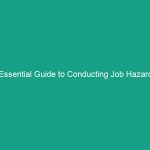Introduction
Good morning team,
Today, we’re going to talk about an essential aspect of crane Operation that directly impacts our Safety on site: Crane Outrigger Setup. Proper outrigger setup is crucial for ensuring stability, especially when working on uneven ground. Understanding this can prevent accidents and save lives.
It’s important to recognize that improper setup can lead to catastrophic failures. So, let’s delve into why crane outrigger setup matters and how we can ensure we’re doing it right every time.
Understanding Crane Outrigger Setup
The Crane Outrigger Setup refers to the process of extending the stabilizing legs (outriggers) of a crane to distribute its weight evenly and provide stability during operation. This is particularly vital when working on uneven or sloped surfaces, where the risk of tipping is significantly higher.
Common misconceptions include thinking that simply extending the outriggers is enough. However, proper positioning and support are equally important. If you’ve ever seen a crane tip over due to inadequate outrigger setup, you understand the severe consequences of neglecting this important Safety procedure.
Key Hazards, Risks, and Safety Considerations
Understanding the Hazards associated with improper crane outrigger setup is crucial. Here are some of the key risks:
- Tip-Over Risks: A crane can tip over if the outriggers are not properly deployed, particularly on uneven ground.
- Load Stability: Inadequate outrigger setup can disrupt load stability, leading to potential accidents.
- Ground Conditions: Soft, muddy, or sloped surfaces can exacerbate the risk of instability.
The real-world consequences of ignoring these safety protocols can be severe, including injuries to operators and bystanders, damage to equipment, and costly downtime. It’s crucial to be aware of these risks before setting up a crane.
Best Practices, Procedures, & Actionable Advice
To ensure safety during crane outrigger setup on uneven ground, follow these Best Practices:
Step-by-Step Safety Procedures
- Site Assessment: Before setting up, perform a thorough site assessment to identify potential hazards, including the type of ground and any obstacles in the work area.
- Leveling: Use leveling devices or tools to gauge the site slope. If the ground is significantly uneven, consider using cribbing or blocking to create a stable base for the outriggers.
- Deploy Outriggers: Extend the outriggers fully and ensure they are positioned on solid ground. Use mats or pads if necessary to distribute the load and prevent sinking.
- Check for Stability: After deployment, check the stability of the crane. Ensure that the crane is not leaning or unstable. If necessary, readjust or reposition the outriggers.
- Load Management: Ensure that the load is properly balanced and within the crane’s capacity. Always refer to the manufacturer’s specifications and guidelines.
Real-Life Examples
Consider the case of a construction site where a crane tipped over due to inadequate outrigger setup. The crane was positioned on a sloped surface without proper cribbing, leading to a failure during lifting operations. This incident resulted in significant damage and injury to the operator.
This example underscores the importance of following proper procedures and ensuring adequate support at all times.
Regulations, Standards, and Compliance
Compliance with safety Standards is critical when operating cranes. Relevant Regulations include:
- OSHA Regulations: The Occupational Safety and Health Administration (osha) provides guidelines on crane operations, including outrigger usage.
- ANSI Standards: The American National Standards Institute (ANSI) sets forth safety standards that must be adhered to during crane operations.
- Company-Specific Policies: Always follow your company’s safety policies and procedures regarding crane operations and outrigger setup.
Understanding these regulations is crucial to ensure compliance and protect employees from accidents and injuries. Non-compliance can lead to serious consequences, including fines and increased risk of accidents.
Employee Engagement & Discussion
Now, I’d like to open the floor for discussion. Here are a few questions to consider:
- What safety challenges have you encountered related to crane outrigger setup?
- Have you ever witnessed or experienced an incident due to improper outrigger placement?
- What additional steps do you think could improve our outrigger setup process?
Your input is invaluable, and sharing your experiences can help improve our safety practices. Let’s learn from each other to enhance our Workplace Safety culture.
Conclusion & Key Takeaways
In summary, proper crane outrigger setup is essential for ensuring stability, particularly on uneven ground. Remember these key points:
- Always assess the site and ground conditions before setup.
- Fully extend and position the outriggers on solid ground.
- Check stability and load balance after setup.
- Adhere to all safety regulations and company policies.
By prioritizing safety and following these Best Practices, we can significantly reduce the risk of accidents on site. Thank you for your attention and commitment to safety. Let’s make it a priority to implement these practices every day!


